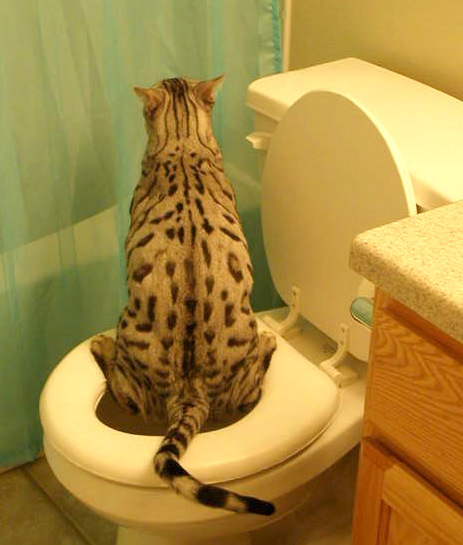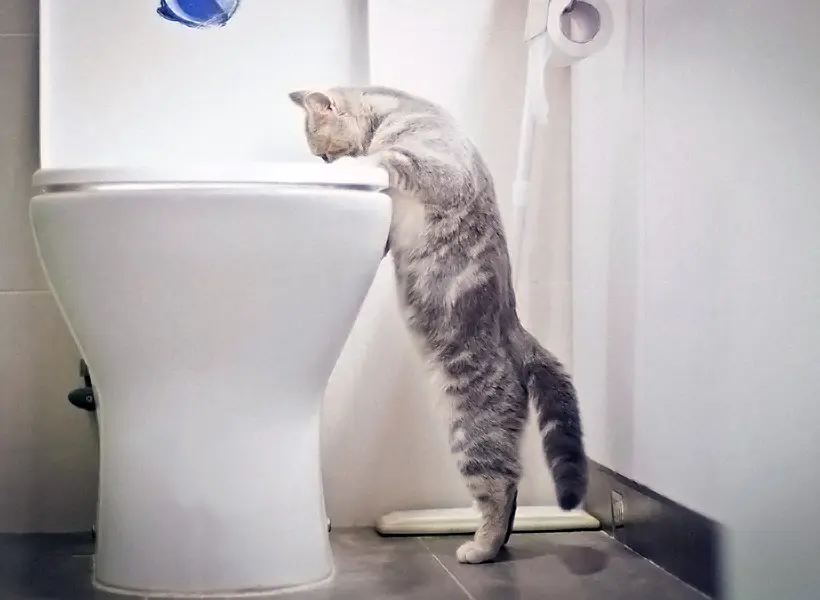Prevent Bathroom Disasters: Don't Flush Cat Poop Down Your Toilet - Expert Guidance
Prevent Bathroom Disasters: Don't Flush Cat Poop Down Your Toilet - Expert Guidance
Blog Article
Each person seems to have their unique way of thinking about Can You Flush Cat Poo or Litter Down the Toilet?.

Introduction
As pet cat owners, it's necessary to be mindful of how we dispose of our feline friends' waste. While it might seem convenient to flush feline poop down the commode, this technique can have harmful effects for both the environment and human health.
Alternatives to Flushing
Fortunately, there are much safer and much more liable methods to get rid of feline poop. Consider the adhering to options:
1. Scoop and Dispose in Trash
The most usual method of dealing with feline poop is to scoop it into a naturally degradable bag and throw it in the garbage. Make sure to utilize a dedicated clutter scoop and take care of the waste quickly.
2. Use Biodegradable Litter
Choose biodegradable feline trash made from products such as corn or wheat. These clutters are eco-friendly and can be safely gotten rid of in the garbage.
3. Hide in the Yard
If you have a lawn, think about burying feline waste in a designated area away from vegetable gardens and water resources. Make sure to dig deep sufficient to stop contamination of groundwater.
4. Install a Pet Waste Disposal System
Purchase a pet dog waste disposal system particularly developed for pet cat waste. These systems use enzymes to break down the waste, reducing odor and environmental influence.
Wellness Risks
Along with environmental concerns, purging pet cat waste can additionally pose health and wellness dangers to people. Feline feces might include Toxoplasma gondii, a bloodsucker that can create toxoplasmosis-- a potentially extreme health problem, specifically for expecting ladies and people with damaged body immune systems.
Ecological Impact
Flushing cat poop presents unsafe microorganisms and bloodsuckers right into the water, posing a considerable risk to aquatic communities. These pollutants can adversely influence marine life and compromise water quality.
Conclusion
Responsible family pet possession expands past offering food and shelter-- it also involves proper waste management. By refraining from purging feline poop down the commode and choosing alternate disposal techniques, we can reduce our environmental footprint and shield human wellness.
Why Can’t I Flush Cat Poop?
It Spreads a Parasite
Cats are frequently infected with a parasite called toxoplasma gondii. The parasite causes an infection called toxoplasmosis. It is usually harmless to cats. The parasite only uses cat poop as a host for its eggs. Otherwise, the cat’s immune system usually keeps the infection at low enough levels to maintain its own health. But it does not stop the develop of eggs. These eggs are tiny and surprisingly tough. They may survive for a year before they begin to grow. But that’s the problem.
Our wastewater system is not designed to deal with toxoplasmosis eggs. Instead, most eggs will flush from your toilet into sewers and wastewater management plants. After the sewage is treated for many other harmful things in it, it is typically released into local rivers, lakes, or oceans. Here, the toxoplasmosis eggs can find new hosts, including starfish, crabs, otters, and many other wildlife. For many, this is a significant risk to their health. Toxoplasmosis can also end up infecting water sources that are important for agriculture, which means our deer, pigs, and sheep can get infected too.
Is There Risk to Humans?
There can be a risk to human life from flushing cat poop down the toilet. If you do so, the parasites from your cat’s poop can end up in shellfish, game animals, or livestock. If this meat is then served raw or undercooked, the people who eat it can get sick.
In fact, according to the CDC, 40 million people in the United States are infected with toxoplasma gondii. They get it from exposure to infected seafood, or from some kind of cat poop contamination, like drinking from a stream that is contaminated or touching anything that has come into contact with cat poop. That includes just cleaning a cat litter box.
Most people who get infected with these parasites will not develop any symptoms. However, for pregnant women or for those with compromised immune systems, the parasite can cause severe health problems.
How to Handle Cat Poop
The best way to handle cat poop is actually to clean the box more often. The eggs that the parasite sheds will not become active until one to five days after the cat poops. That means that if you clean daily, you’re much less likely to come into direct contact with infectious eggs.
That said, always dispose of cat poop in the garbage and not down the toilet. Wash your hands before and after you clean the litter box, and bring the bag of poop right outside to your garbage bins.
https://trenchlesssolutionsusa.com/why-cant-i-flush-cat-poop/

As a reader about How to Dispose of Cat Poop and Litter Without Plastic Bags, I think sharing that piece of content was essential. Liked our review? Please share it. Help somebody else locate it. Thank you so much for taking the time to read it.
Click Here Report this page